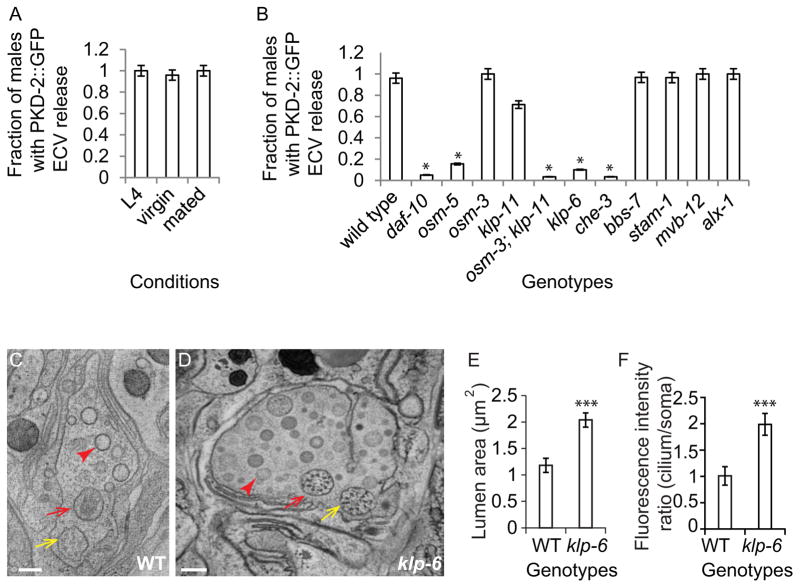Figure 2.
ECV release is constitutive, independent of ESCRT-0 and -I components, and dependent on IFT and the kinesin-3 klp-6. (A) Wild-type L4 larvae, virgin males and mated males equally shed and release PKD-2::GFP ECVs. (B) PKD-2::GFP ECV release is impaired in daf-10 (IFT-A), osm-5 (IFT-B), osm-3;klp-11 (redundant anterograde kinesin-2 motors), klp-6 (kinesin-3) and che-3 (dynein heavy chain, retrograde motor). osm-3, klp-11, and bbs-7 and MVB biogenesis pathway single mutants are not defective in PKD-2::GFP release. Error bar indicates 95% confident intervals, * Different from wild type, Fisher’s exact test, Bonferroni-Holm corrected P < 0.05). (C–D) Cross sections of the cephalic sensillum at CEM transition zone level in wild type and klp-6 mutant. Yellow arrows point to the CEP neuron; red arrows point to the CEM neuron; red arrowheads point to the ECVs. Scale bar is 200 nm. (E) Quantification of the lumen cross-sectional area in wild-type and klp-6 mutant males. (F) klp-6 mutants accumulate PKD-2::GFP at the ciliary region, and the ratio of total fluorescence intensity of cilium to soma is significantly greater than wild type (in E–F, error bar indicates Stdev, *** p<0.001 by Mann-Whitney test).

